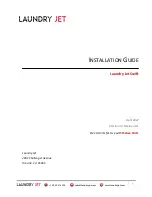
iNSTallaTiON
installation
www.stiebel-eltron.com
HSBB 200 S (GB) |
9
!
Material losses
Never switch on the power before filling the system.
Note
With a conductivity >1000 μS/cm, desalination treatment
is recommended in order to avoid corrosion.
Note
If you treat the fill water with inhibitors or additives, the
same limits as for desalination apply.
Note
Suitable appliances for water softening, as well as for
filling and flushing heating systems, can be obtained via
trade suppliers.
11.5.1 Flushing out the hot water system
Before turning on the water supply, open all taps. Allow the sys-
tem to fill and flush out all flux and debris from the installation.
11.5.2 Filling the heating system
Check whether volume and pre-charge pressure of the diaphragm
expansion vessel match the requirements of the heating system
(see chapter "Specification / Data table").
D
00000
70
88
6
f
f
Remove the protective cap of the fill valve on the diaphragm
expansion vessel.
f
f
Check the pre-charge pressure of the diaphragm expansion
vessel using a pressure gauge. Please note that the system
must be non-pressurised.
f
f
Refit the protective cap to the fill valve.
In the delivered condition, the 3-way diverter valve of the mul-
tifunction assembly is in its centre position, so that the heating
circuit and the heat exchanger for DHW heating are filled evenly.
When power is switched on, the 3-way diverter valve automatically
switches to heating mode.
To fill or drain the system later, you must first place the 3-way
diverter valve into its centre position.
To set the heat pump manager:
f
f
With the MENU key, call up the main menu.
f
f
Select the menu or value and confirm with OK:
DIAGNOSIS
RELAY TEST SYSTEM
DRAIN HYD
D
00000
70
88
3
f
f
Fill the heating system via the drain valve.
D
00000
70
88
8
f
f
After filling the heating system, check the cap valve for
tightness.
f
f
Vent the pipework.
11.5.3 DHW cylinder filling
!
Material losses
Some fluxes used to solder pipes and fittings need to be
flushed out with hot water.
f
f
Heat the cylinder to its normal operating tempera-
ture and flush all pipe work with hot water to ensure
all flux and debris is removed from the system.
f
f
Fill the DHW cylinder via the the drain valve in compliance
with the UK Water Supply (Water Fittings) Regulations 1999,
Section 8 G24.
f
f
Open all downstream draw-off valves/taps until the appli-
ance is full and the pipework is free of air.
f
f
Adjust the flow rate. For this, observe the maximum permis-
sible flow rate with a fully opened tap (see chapter "Specifi-
cation / Data table"). If necessary reduce the flow rate at the
butterfly valve of the safety assembly.
f
f
Carry out a tightness check.
f
f
Check the safety valve.


































